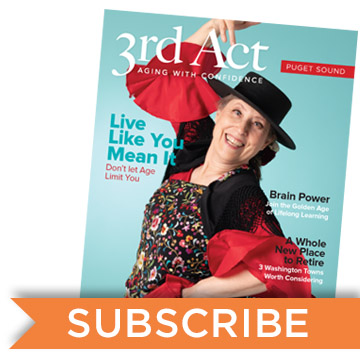Tell me, what else should I have done?
Doesn’t everything die at last, and too soon?
Tell me, what is it you plan to do
With your one wild and precious life?
This, the final stanza of Mary Oliver’s well-known poem “The Summer Day” challenges readers to reflect upon the purpose of living, especially for those experiencing increasing longevity in the third act of their lives. She asks us to take stock of what we’ve done until now and then what we envisage ourselves doing with the time we have remaining—the use of the words wild and precious give these questions a sense of urgency.
I’ve found that most people simply answer that they want to do whatever will bring them happiness. After all, our culture is forever telling us that the goal of life is to be happy. Even in the 19th century this was an oft-expressed sentiment, something that caused Ralph Waldo Emerson to write, “The purpose of life is not to be happy. It is to be useful. To be honorable. To be compassionate. To have it make some difference that you have lived and lived well.”
Happiness is a byproduct of right living—of being fully engaged in the world and doing what we sense Spirit is calling us to do.
When thinking about how to age artfully—creating a life that’s a manifestation of our dreams and a reflection of our core values—we should first think about how we can be of service to others and to our communities. If we do this, we will have a conscious, purpose-filled life.
In my own life there have been periods where it seemed that life just happened to me, that my decisions about the direction of my life were made as a reaction to forces out of my control or choices made by others. Inevitably, I suffered because of it.
Aristotle taught that choice, not chance, determines one’s destiny. It’s up to us to step off the merry-go-round we no longer wish to ride, and take stock of who we are and how we want to live. We can then become the driver of our destinies—the creator of our lives.
Up until the middle of the last century most people didn’t live long enough or have the economic security that would allow them to consider how best to live in their senior years. In the U.S., life expectancy in 1900 was only 47 years. By 1950, it increased to 68 years and, up until the COVID pandemic, had risen to 79 years. For most of history the majority of people worked right up until the time of their death. The option of retirement and the question of how best to spend their last years never arose.
It is a privilege that those of us with sufficient financial resources can reimagine who we are and how we want to live our lives. However, no matter one’s economic means or health status, we can all choose to live a life filled with purpose, creativity, personal growth, and grace.
We do this by starting where we are. We accept that we have certain abilities and not others, and ask ourselves the following questions:
-
How can I be of service to humanity?
-
What have I dreamed of doing, but am afraid to try?
-
What did I once like doing, but then stopped?
-
Why do I care what anyone thinks about me and what I do?
What we come up with when answering these questions will be rich, varied, and maybe even surprising. Perhaps we have a skill or ability that could be used in a volunteer setting, or our life experience or career can help someone who is struggling with their life circumstances or work. We may remember talents we exhibited as children, but weren’t given a chance to develop. Conceivably there are things we once liked doing such as dancing or painting, but quit because we thought we weren’t good enough.
Life is precious—and finite. How do you choose to spend the remainder of “your one wild and precious life?”
Stephen Sinclair lives in Seattle’s Capitol Hill neighborhood. Earlier in his life he enjoyed a career in show business while working out of New York and Chicago. A career as an ordained Unitarian Universalist parish minister and a hospital chaplain followed. Most recently, he worked with the homeless and is a weekly volunteer visitor at the Monroe Correctional Complex.
Read more by Stephen Sinclair


